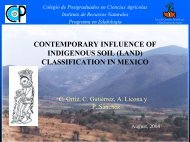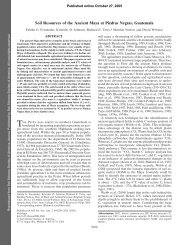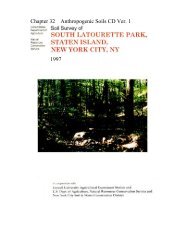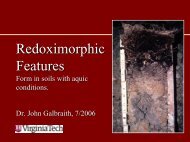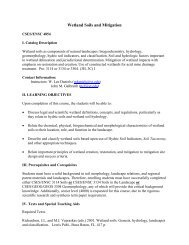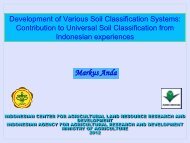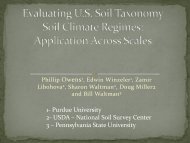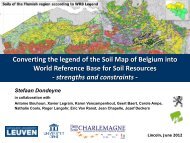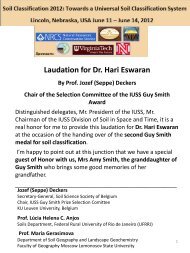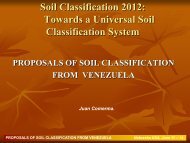Nebraska Soils Field Trip - Virginia Tech
Nebraska Soils Field Trip - Virginia Tech
Nebraska Soils Field Trip - Virginia Tech
Create successful ePaper yourself
Turn your PDF publications into a flip-book with our unique Google optimized e-Paper software.
4th IUSS Soil Classification Conference <strong>Field</strong> Tour Guidebook<br />
Diagnostic horizons and features recognized in this pedon:<br />
mollic epipedon--the zone from the surface to a depth of 38 centimeters (15 inches) (Ap and A<br />
horizons);<br />
cambic horizon--the zone from a depth of 38 to 76 centimeters (15 to 30 inches) (Bw1 and Bw2<br />
horizons);<br />
udic moisture regime.<br />
Cation-exchange class is supported by lab sample number S87IA-155-003, NSSL.<br />
Taxonomy version--Keys to Soil Taxonomy, ninth edition, 2003<br />
The loess deposits are typically 24 to 32 feet thick but is as thin as 6 feet on some convex side<br />
slopes and as thin as 5 feet on loess covered stream terraces<br />
ADDITIONAL DATA:<br />
Laboratory data--Iowa State University, Ames, IA, many pedons<br />
Laboratory data--National Soil Survey Laboratory, Lincoln, <strong>Nebraska</strong>, many pedons<br />
(http://ssldata.sc.egov.usda.gov/)<br />
National Cooperative Soil Survey<br />
U.S.A.<br />
99





